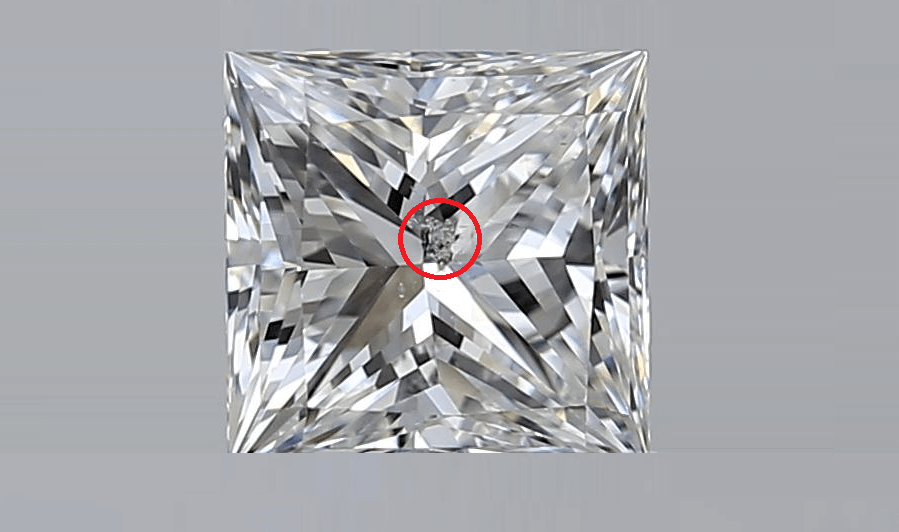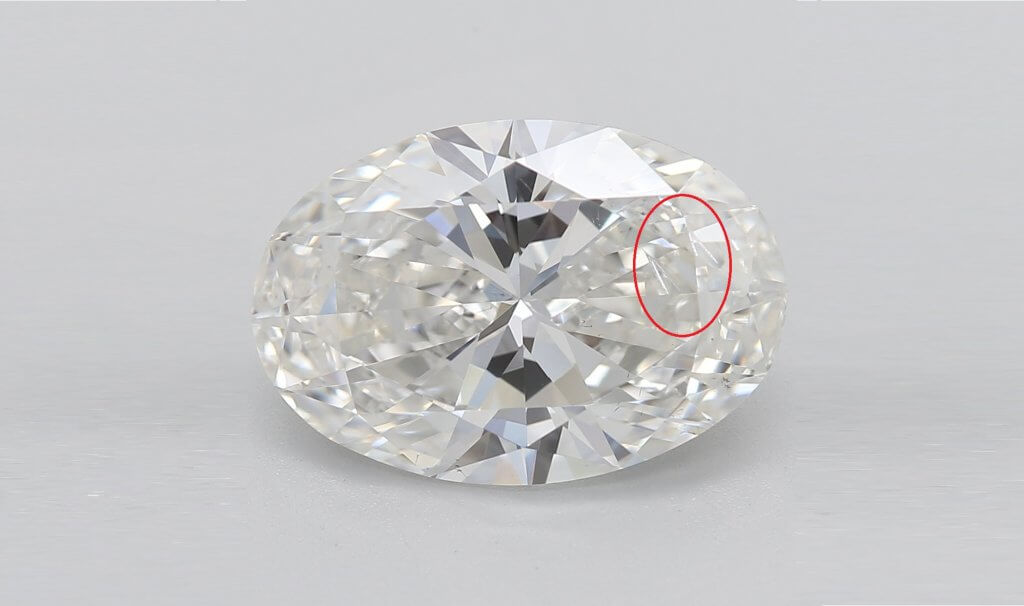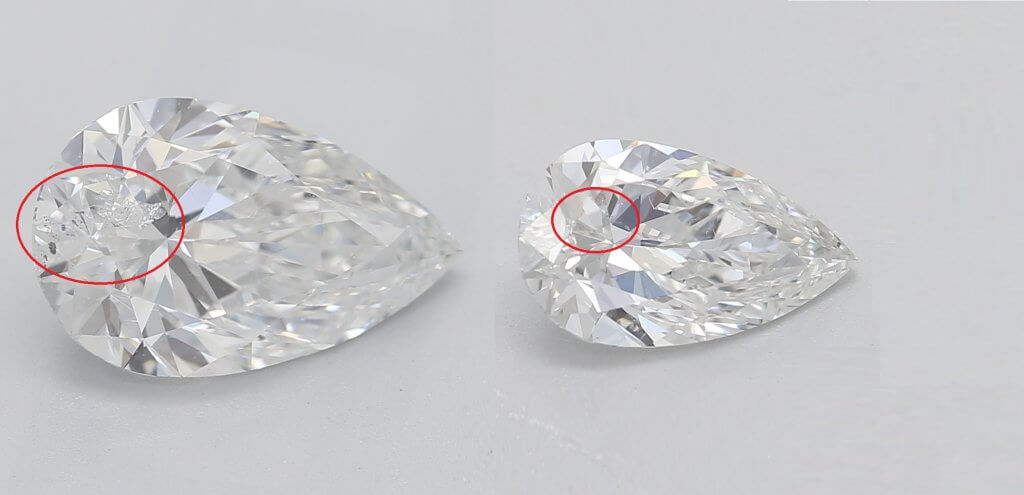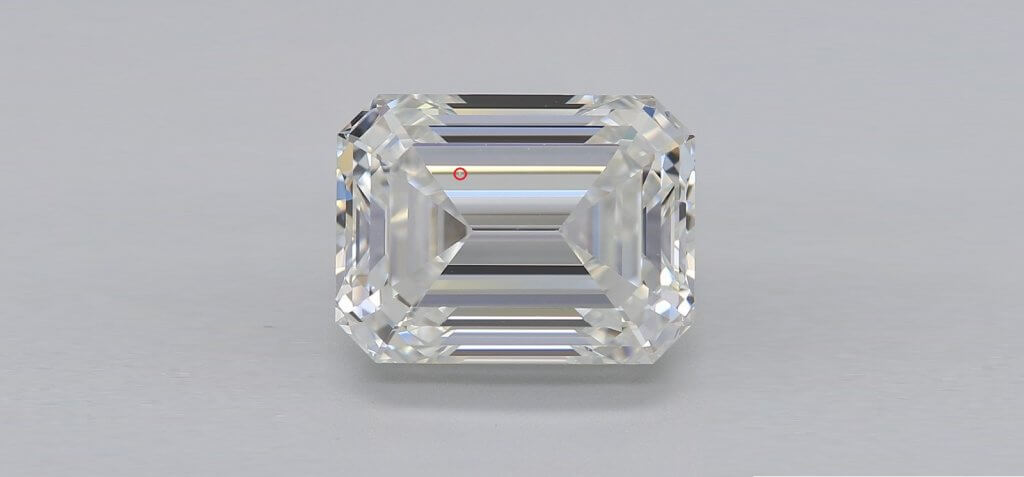The Negative Effect Of Internal Graining On Diamond’S Value
Key Takeaways
- All diamonds have some sort of inclusion buried deep within them. Very rarely, these inclusions are invisible even under powerful magnification but, for the majority of the time, these inclusions can be identified with the right tools.
- Internal graining is a type of inclusion, caused during the diamond’s growth cycle deep underground.
- They are often indicative of a period of slowed growth – a little like the inconsistencies in the rings of a tree.
- Internal graining is not something to shy away from, unless the flaw is visible to the naked eye. Eye clean diamonds are way better investments than internally flawless diamonds, so don’t turn your back on a diamond just because the GIA report identifies some internal graining.

It takes more than a billion years for a diamond to form – for that unique, fascinating crystal structure to begin to form, and to grow into the rough stones that are cut and polished into true works of art.
As a result of the incredible pressure it takes for them to form, diamonds are the product of a tight atomic structure. Each carbon atom is bonded to four other carbon atoms, creating the rigid, strong, hard, and characteristically transparent substance famed across the globe. All this, completed over an unimaginably long stretch of time, and deep below the earth’s surface, where only the most brutal forces of nature are at work.
This is why it’s totally understandable that so many diamonds come to the surface of the earth with slight imperfections – inclusions buried deep within their internal structure, trapped beneath the diamond’s surface many, many thousands of years in the past.
There are a lot of different types of inclusions. Some are caused by chemical impurities – traces of other substances locked into the diamond’s tight structure – while others are faults within the structure itself.
Internal graining is the perfect example of this – a flaw with the diamond’s own structure, rather than an impurity or crystal caught inside the diamond. It’s pretty common to see it printed on GIA report, so here’s what you need to know.
Do diamonds have grains?
They can, and graining is a common inclusion found in many natural diamonds.
It’s not something cutters or jewelers can control but, often, it’s not a big deal, and doesn’t need to be considered a reason to walk away from an otherwise great diamond.
They should not be confused with polish marks, which are found on the diamond’s surface.
What is internal graining in a diamond?
Internal graining are instances of abnormal crystal development. They do look a little like polish marks, but caught inside the diamond, rather than lying on its surface.
Diamond graining can be the result of slowed or accelerated growth. Think of how the rings in a tree stump indicate their fluctuating growth – times when the weather was on their side, and times when they almost stopped growing. It’s a similar story for diamonds.
Internal graining isn’t usually all that obvious, and is often disguised very well within smaller diamonds, meaning plenty of diamonds with internal graining are still eye clean. This inclusion can be visible from some angles, and not from others – for instance, you might find a diamond where internal graining is visible under magnification from the pavilion, but not through the table.
How do you know if a diamond has internal graining?
If you can’t see if for yourself, then look in the GIA report. Any noteworthy instances of graining will be explicitly mentioned in the report.
Internal graining is rarely identified on a diamond plot, since it is often so minor (particularly in comparison with other types of inclusions) and hard to spot even under 10x magnification.
In diamonds graded high on the clarity scale – say, VVS1 and VVS2 diamonds – it’s not uncommon for the ‘Additional Grading Information’ to contain the following phrase:
- Clarity grade is based on internal graining that is not shown.
This means that your diamond’s internal graining is incredibly minor, and that it won’t be detectable without strong magnification.
Of course, while this is reassuring to read, it’s not the best way to pick out a diamond. The best options are eye clean, but at a much lower clarity grade, since VVS1 and VVS2 diamonds are priced thousands of dollars higher simply because they’re one step closer to ‘perfect’.
It’s way better to go for, say, an eye clean VS2 diamond with a few inclusions illustrated on the diamond plot than a VVS2 diamond with nothing more than a little internal graining.
How does a graining look in a rough diamond?
It will be very hard to spot – probably only visible under 10x, 20x, or even 30x magnification.
Some inclusions are harder to spot in rough diamond, since the polished facets of the cut stone make it easier to see through it. As we mentioned, internal graining in cut and polished diamonds is usually impossible to spot with the naked eye – so, as you can imagine, the story is exactly the same for rough diamonds.
Is internal graining a dealbreaker?
No. As far as inclusions go, this one is often very minor.
In extreme cases, internal graining can cause a diamond to appear cloudy and dull. This is, of course, a lot less common than instances of minor, non-visible internal graining, but it’s worth knowing that it can be a lot worse.
In these cases, you will be able to see straightaway that the diamond is being impacted significantly by its own inclusions. This is a perfect example of why you should not take the risk of buying a diamond online – even if you think it looks fine in the photo. Winding up with a lifeless diamond is one of the biggest risks you run when you go online, and that alone is enough to convince anyone to book an appointment with a local jeweler.
What Else Should You Look Out For?
Look for major inclusions that are visible to the naked eye, or non-visible inclusions that are located dangerously close to the diamond’s surface (particularly any vulnerable points, like corners or the culet).
While internal graining is (almost always) relatively minor, there are some inclusions that you just can’t take the risk on – even if the diamond itself appears eye clean. Some faults can (and will) threaten a diamond’s structural integrity and, while a good jeweler will always be there to stop you from making any mistakes, it’s always worth knowing what to look out for, rather than hoping you don’t make a bad purchase.
For more information, you can read our guide to diamond inclusions you should avoid at all costs, in order to ensure that your diamond is capable of withstanding years’ worth of wear and tear without sustaining significant damage.

Sep 24, 2021 By Willyou.net
The Surprising Facts About Diamond Feathers

Mar 17, 2022 By Willyou.net
Avoiding Diamond Inclusions: The Key To Clarity








